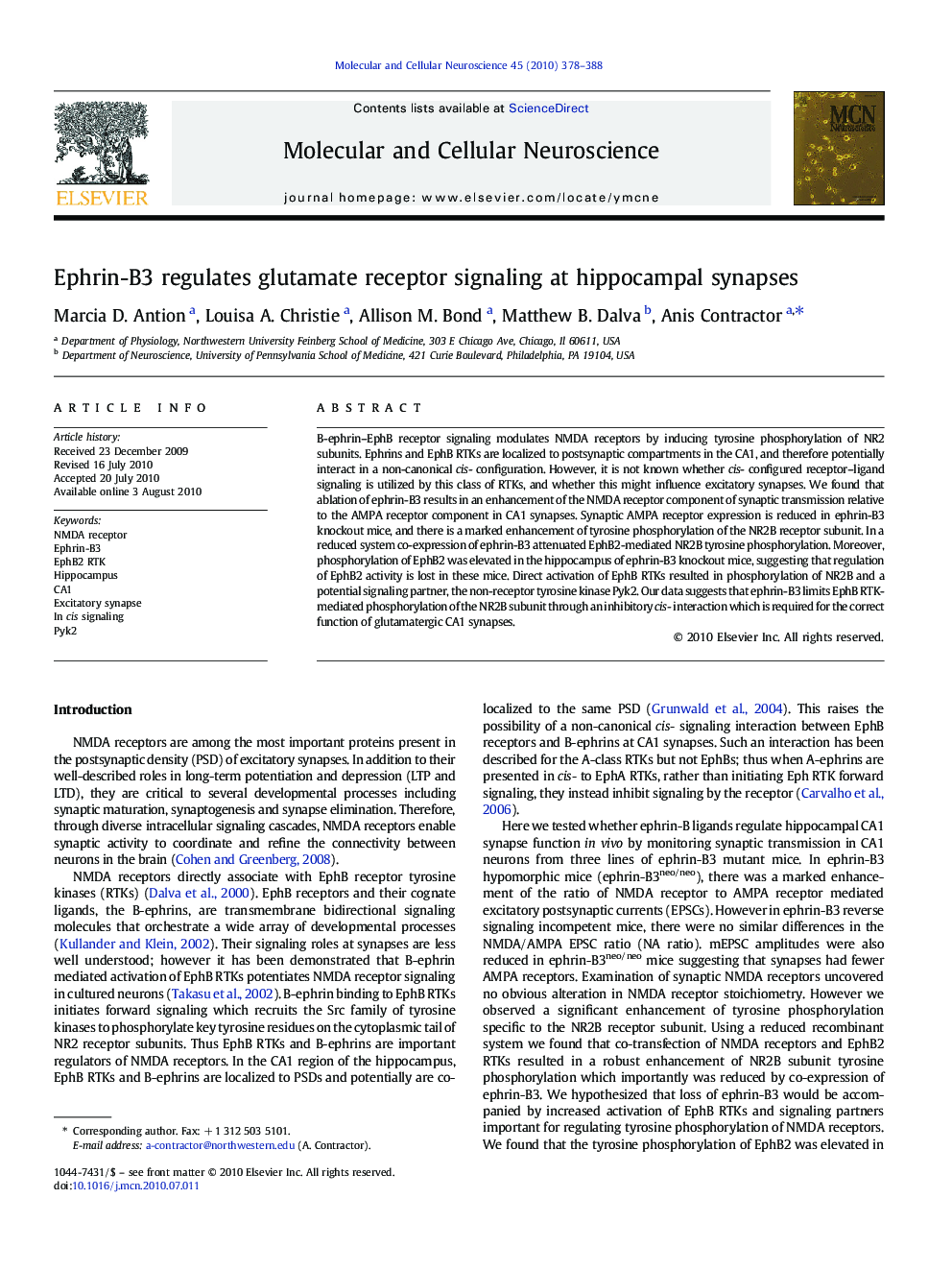| Article ID | Journal | Published Year | Pages | File Type |
|---|---|---|---|---|
| 10956610 | Molecular and Cellular Neuroscience | 2010 | 11 Pages |
Abstract
B-ephrin-EphB receptor signaling modulates NMDA receptors by inducing tyrosine phosphorylation of NR2 subunits. Ephrins and EphB RTKs are localized to postsynaptic compartments in the CA1, and therefore potentially interact in a non-canonical cis- configuration. However, it is not known whether cis- configured receptor-ligand signaling is utilized by this class of RTKs, and whether this might influence excitatory synapses. We found that ablation of ephrin-B3 results in an enhancement of the NMDA receptor component of synaptic transmission relative to the AMPA receptor component in CA1 synapses. Synaptic AMPA receptor expression is reduced in ephrin-B3 knockout mice, and there is a marked enhancement of tyrosine phosphorylation of the NR2B receptor subunit. In a reduced system co-expression of ephrin-B3 attenuated EphB2-mediated NR2B tyrosine phosphorylation. Moreover, phosphorylation of EphB2 was elevated in the hippocampus of ephrin-B3 knockout mice, suggesting that regulation of EphB2 activity is lost in these mice. Direct activation of EphB RTKs resulted in phosphorylation of NR2B and a potential signaling partner, the non-receptor tyrosine kinase Pyk2. Our data suggests that ephrin-B3 limits EphB RTK-mediated phosphorylation of the NR2B subunit through an inhibitory cis- interaction which is required for the correct function of glutamatergic CA1 synapses.
Related Topics
Life Sciences
Biochemistry, Genetics and Molecular Biology
Cell Biology
Authors
Marcia D. Antion, Louisa A. Christie, Allison M. Bond, Matthew B. Dalva, Anis Contractor,
